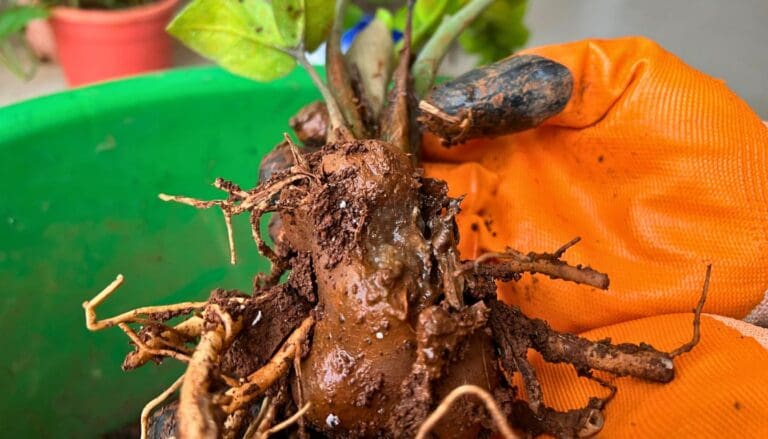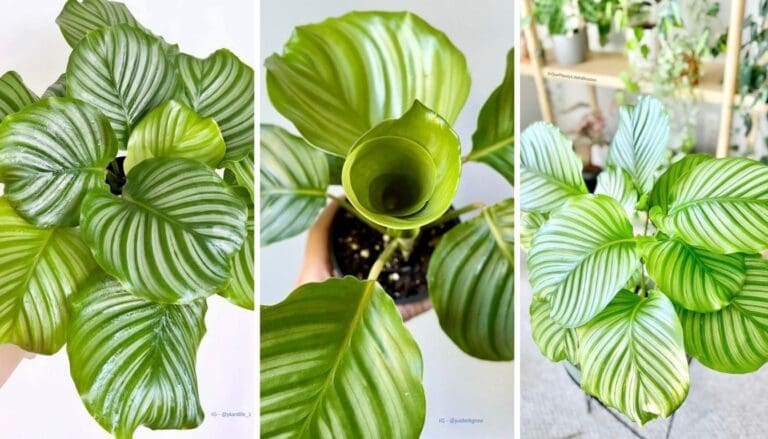7 Plant Tips for Surviving a Weekend Away
Whenever I plan a weekend trip, I can’t help but wonder how my plants will handle the break.
It’s always a little nerve-wracking to leave them, especially when I want them looking their best by the time I get back.
I’ve picked up a few simple tips that make a big difference when I’m gone. With the right prep, I can enjoy my time away and still return to happy, healthy plants.
Please note: Simplify Plants is reader-supported. Some links in the post are affiliate links and I get a commission from purchases made through links in the post.
1) Place plants in a bright, indirect sunlight spot
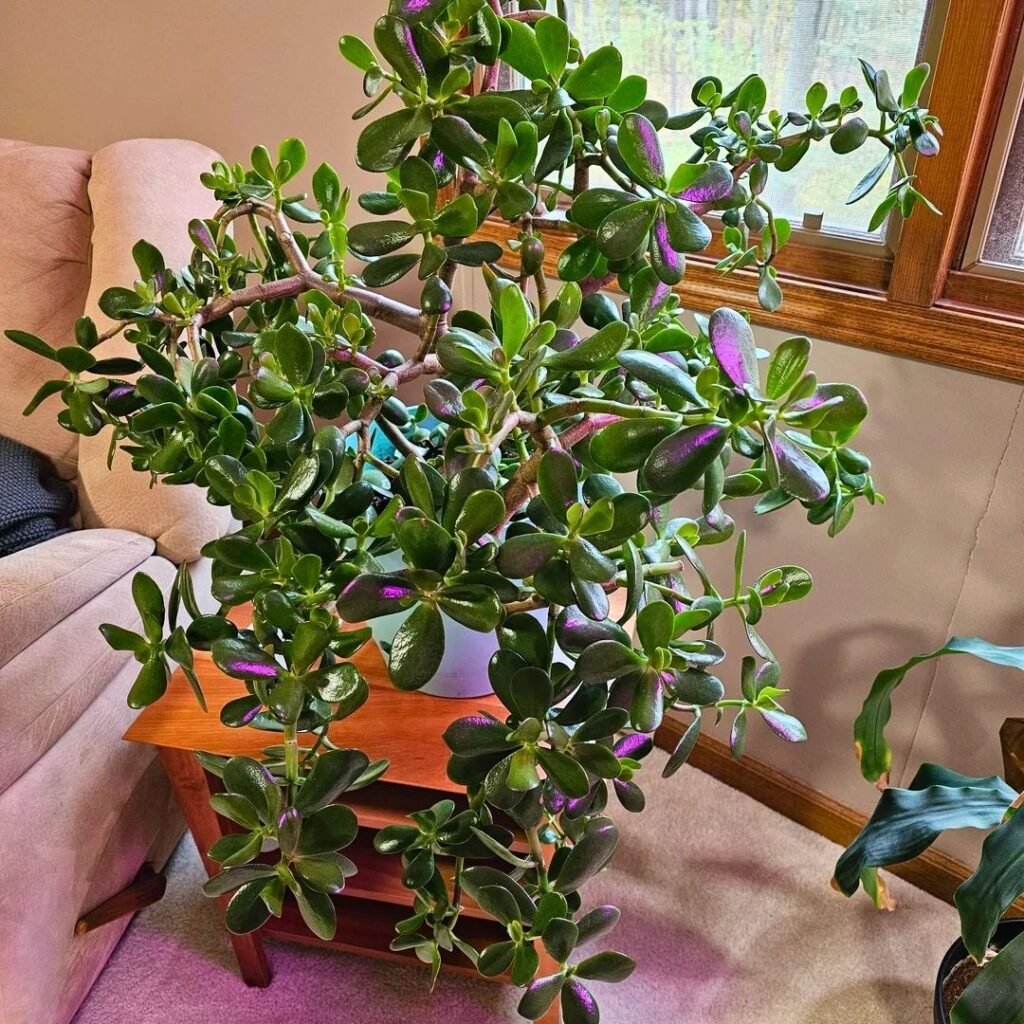
Before heading out, I always make sure my plants are in a spot with bright, indirect sunlight. Too much direct sun? That’s just asking for crispy leaves.
On the flip side, if the light’s too dim, my plants seem to pause their growth or get a little sad. I usually move them away from the hottest windows, especially if the sun’s blazing.
A table near a window with a sheer curtain is my go-to. It lets in plenty of light, but not so much that my plants feel scorched.
Grouping plants together in one bright spot helps too. When plants are close, they share humidity, which is surprisingly helpful if I’m gone for a few days.
For plants that don’t need as much light, I just move them a bit farther from the window, but I avoid those dark corners. My plants have never liked those.
Light really does matter. I always check the chosen spot at different times of day—sometimes the sun shifts more than I expect.
2) Use self-watering spikes with a water reservoir
If I’m going to be gone for a bit, I set up self-watering spikes to keep my plants happy. These little gadgets deliver water slowly right to the roots.
I just fill a bottle with water, attach the spike, and stick it in the soil. It’s not fancy, but it works.
Most spikes fit regular plastic bottles, which I always have lying around. Sometimes I poke a few holes in the bottle to help the water flow.
I like that I can adjust the drip speed, so my thirstier plants get more and the rest get just enough. For a weekend trip, one bottle usually does the trick.
Self-watering spikes are great for avoiding overwatering. The soil only takes what it needs, so I don’t come home to a soggy mess.
If I’m gone longer, I’ll use bigger bottles or ask a friend to top them up. I have to admit, it’s a relief knowing my plants are pretty much set with this method.
3) Group plants together to create a humid microclimate
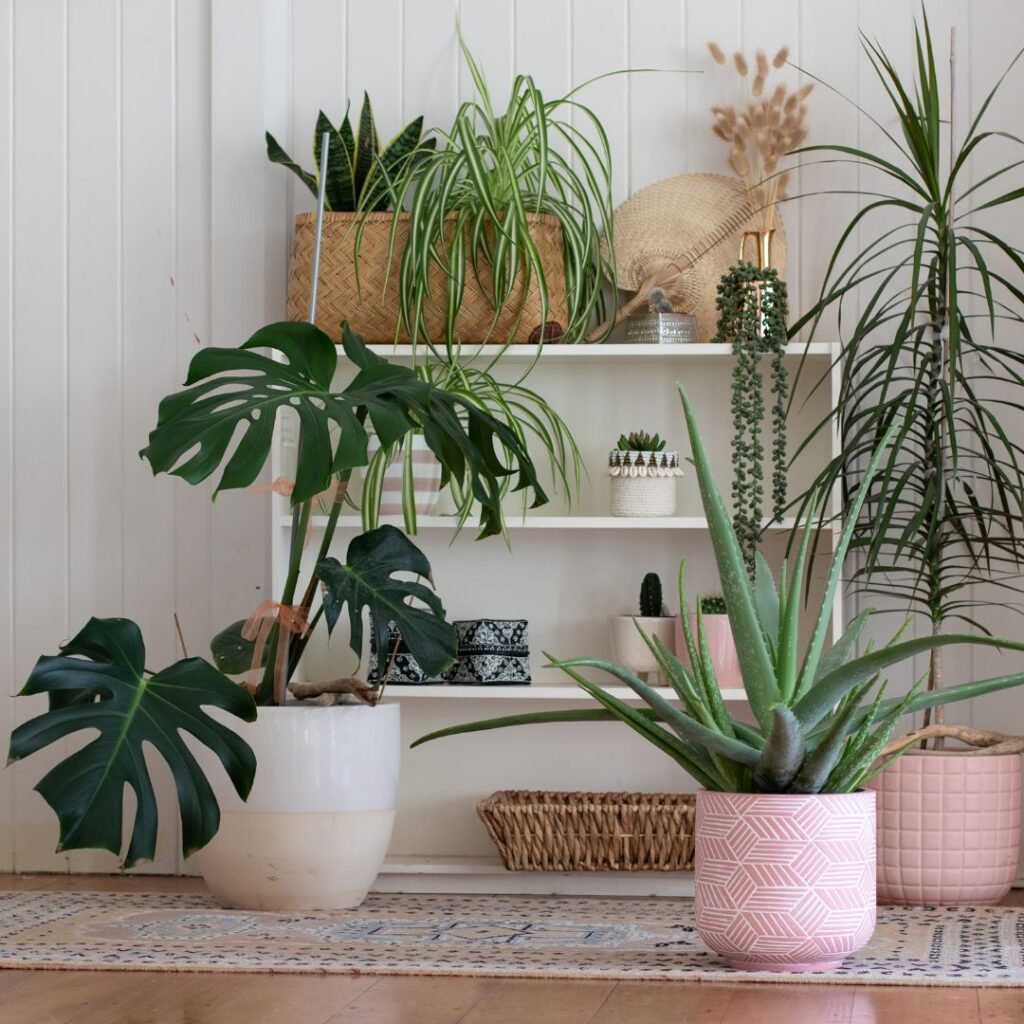
Whenever I’m away for a few days, I like to group my plants together. It’s a simple trick, but it really helps them create a cozy humid zone.
Plants naturally release moisture, so keeping them close means the air around them stays a bit damper. Dry air can be rough on them, especially when nobody’s there to mist or water.
I usually put them in a shaded room or at least out of direct sunlight. Sometimes I add a tray of water nearby to boost the humidity even more.
Most of my houseplants—like ferns, pothos, and spider plants—love this. But succulents and cacti? They’re happier solo, away from the group.
I try not to crowd the plants too much. They need some space for air to move and to avoid mold.
When I get back, my grouped plants almost always look fresher. It’s a small thing that gives me a little peace of mind while I’m away.
4) Water succulents lightly before you leave

Before leaving my succulents for the weekend, I always give them just a touch of water. These guys don’t need much, and too much water is actually worse.
A quick, light drink keeps them happy but not soggy. I usually use a small watering can or even a spray bottle and make sure the soil is just barely damp.
Succulents store water in their leaves, so they can handle a few days without any extra help. Drowning them is pretty much the only way to mess it up.
I try to water them the day before I leave, not right before. That way, the soil has time to absorb the moisture.
If the soil still feels damp when I check, I skip watering. Only dry soil gets a drink.
I always water at the base, never on the leaves. And if the pot doesn’t have drainage holes, I get a little nervous.
By being careful with water, I know my succulents will be just fine while I’m off having fun.
5) Apply a layer of mulch to retain soil moisture
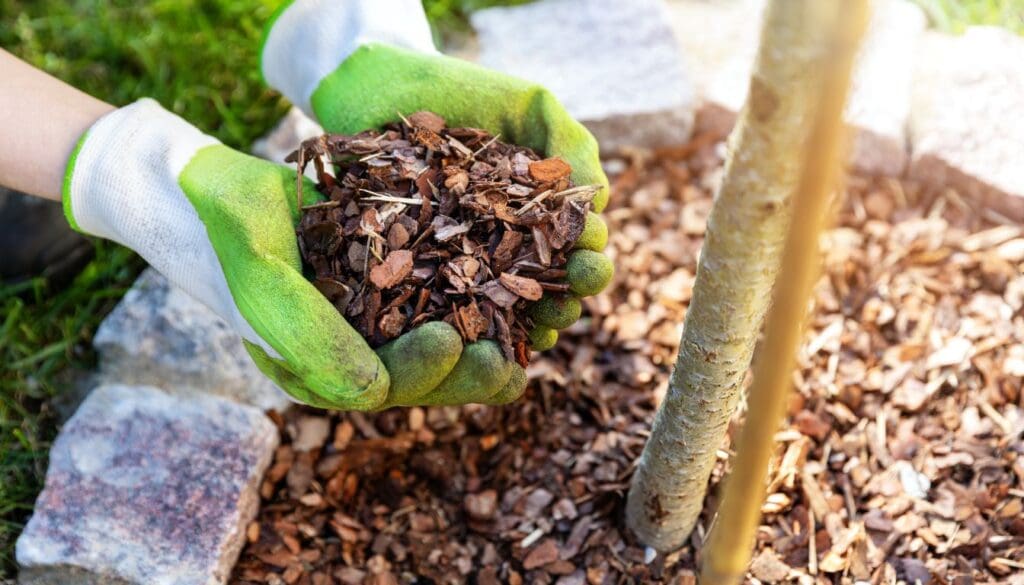
If I’m going away for a few days, I like to add a layer of mulch around my plants. It’s such a simple way to keep the soil moist and cool.
I’ll use whatever’s handy—wood chips, straw, even dried leaves. They all help shade the soil and slow down evaporation.
Mulch keeps water from disappearing too fast, so the plants have a better shot at staying hydrated while I’m gone.
I spread the mulch about two inches thick, but I’m careful not to pile it against the plant stems. Gotta let them breathe.
Mulch also keeps weeds down, which is a nice bonus. I always feel better knowing my garden won’t be a mess when I get back.
It’s an easy step that really pays off.
6) Move delicate plants away from drafts or heat sources
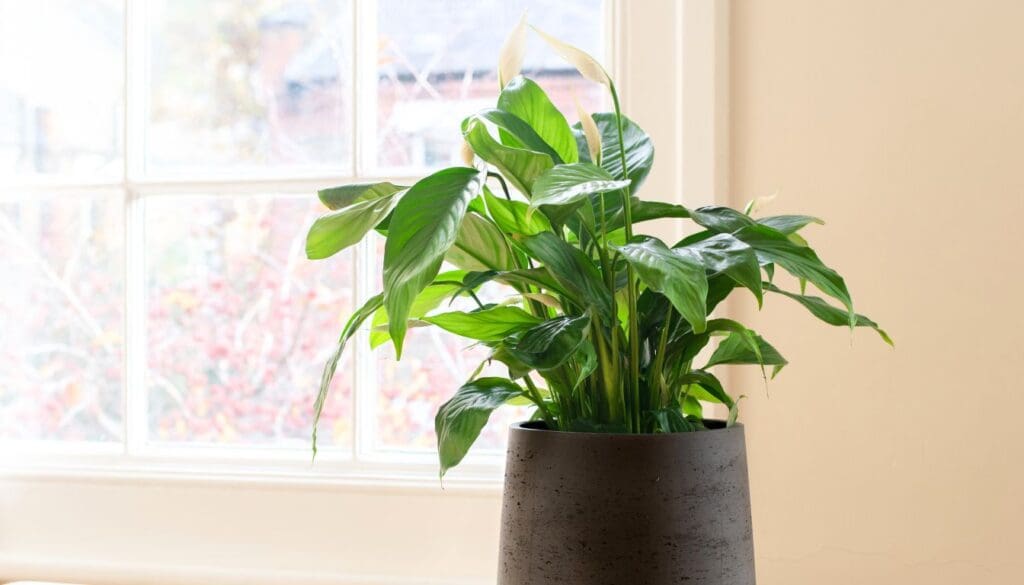
Before I leave, I always move my delicate plants away from drafty spots like windows or doors. Sudden blasts of hot or cold air just stress them out.
I also keep them away from radiators, heaters, and vents. Too much heat dries out the soil and leaves way too quickly.
Sunlight matters, but direct sun through a window can get intense. I put sensitive plants somewhere with indirect light and a steady temperature.
Fans and air conditioners? I avoid those too. Constant airflow just dries things out faster.
I double-check before I go to make sure all the delicate plants are tucked away in a comfy spot. It’s a quick fix that makes a big difference.
7) Use a moisture meter to check soil dampness before leaving

I always grab my moisture meter before I leave town. It’s honestly the easiest way to know if my plants need water or not.
I just stick it in the soil and check the reading. If it’s dry, I water; if it’s damp, I leave it alone.
Watering right before leaving can backfire if the soil’s already wet. Overwatering is just as bad as forgetting to water.
The meter takes the guesswork out, and I like that it doesn’t need batteries. I’ve used mine for years.
It’s become one of my must-have tools for travel days. Makes checking every plant so much faster.
Understanding Your Plants’ Weekend Needs
Every plant’s a little different, even if it’s just a couple days alone. Knowing what each one likes helps me avoid coming home to droopy or crispy leaves.
Recognizing Watering Habits
First, I check how often each plant usually wants water. Some, like succulents and cacti, can go without water for a while.
Others—ferns, peace lilies—need more frequent moisture. If the soil dries out fast, I’ll water them right before I leave.
I just stick my finger an inch into the soil. If it’s dry, it’s time for a drink.
Here’s my quick cheat sheet:
- Succulents: Water once before leaving, usually fine for the weekend.
- Tropical plants: Check if soil is damp before I go.
- Small pots: These dry out faster, so I move them to a shady spot if I can.
Grouping plants together is another trick to keep humidity up. They don’t dry out as fast that way.
Light and Temperature Considerations

I make sure plants aren’t stuck in harsh sunlight while I’m gone. Midday sun can bake the soil and scorch the leaves.
Moving sensitive plants away from south-facing windows helps avoid trouble. I usually leave the blinds a bit open for bright, indirect light.
Here’s what I’ve found works:
| Plant Type | Light Suggestion |
|---|---|
| Snake Plant | Low to medium, indirect light |
| African Violet | Bright, indirect light |
| Aloe Vera | Plenty of filtered sun |
I also keep an eye on the room temperature. Somewhere between 65°F and 75°F seems to work for most of my plants.
Drafts from windows or the AC can stress plants, so I pick a spot with steady air and no sudden chills.
Quick Troubleshooting Common Issues
When I get back from a weekend away, I always do a quick check for signs of stress. Catching problems early helps keep my plants in good shape.
Wilting and Overwatering Signs
If I spot droopy leaves, the first thing I do is poke my finger into the soil. Sometimes it’s bone dry, other times it’s weirdly soggy.
Wilting usually hints at underwatering, but if the soil feels wet, it’s probably too much water. I try to check about an inch deep—dry means it’s time for a drink, but if it’s still damp, I wait.
Here’s a quick chart I actually use:
| Symptom | Possible Cause | Quick Fix |
|---|---|---|
| Droopy leaves | Dry soil | Water the plant |
| Yellow leaves | Wet soil | Stop watering, add airflow |
| Soft stems | Too much water | Remove damaged parts, dry soil |
If my plant’s wilting, I move it out of direct sun and let it chill for a bit. Moldy smells or fuzzy stuff? That’s my cue to dump any standing water and clear away dead leaves.
Managing Unexpected Pests
When I get home, I always give my plants a good once-over for bugs. I peek under the leaves and check along the stems. Gnats, spider mites, aphids— they love to show up when you least expect it.
If I see little webs, sticky patches, or tiny flying things, I jump into action. Sometimes a damp cloth does the trick, or I’ll use a gentle spray of water. If the bugs are stubborn, I whip up a mild soap solution—just a bit of dish soap and water—and carefully wash the leaves.
Here’s what I do to stop pests fast:
- Inspect leaves and stems
- Remove infected leaves
- Wipe with a damp cloth or gentle soap water
If I find any pests, I separate that plant for a few days so the problem doesn’t spread. Better safe than sorry.
Frequently Asked Questions
I always want my plants to stay happy and hydrated when I’m not around. These are questions I get a lot, and honestly, I ask myself the same things before every trip.
What are some effective ways to water my plants while I’m on a two-week vacation?
When I’m gone for two weeks, I use self-watering spikes with little water reservoirs. That way, the plants drink when they need it.
I also group my plants together to keep the area a bit more humid, and sometimes I toss a layer of mulch on top to slow down evaporation.
Can my indoor plants survive without care for a month if I’m away?
Most of my indoor plants can’t make it a full month with zero attention. Succulents and cacti are the exception—they’re pretty chill if I water them before I leave.
The rest? They usually start to droop or die after three or four weeks. I try to get someone to check on them if I’ll be gone that long.
Are there any tips for keeping plants hydrated during a long vacation?
Before I leave, I water my plants really well and set up self-watering systems for the thirstier ones.
I make sure they get bright, indirect sunlight so they stay healthy, but not so much that they dry out immediately. Mulch helps, and grouping plants together keeps things a little more humid.
How can I find a reliable plant sitter for my greenery when I’m traveling?
I usually ask friends, family, or a neighbor to check on my plants. I leave some simple care notes and group the plants together so it’s less work.
If that doesn’t work out, there are plant care apps and websites where you can find someone trustworthy.
Is it safe to leave my plants sitting in water while I travel, and for how long?
I don’t let my plants sit in standing water for long—it’s a recipe for root rot. I stick with self-watering trays or spikes so the soil just soaks up what it needs.
For most plants, I wouldn’t leave them in water for more than a week.
What measures can I take to ensure my plants don’t dry out if I’m away for several weeks?
I’ve picked up a few tricks here and there—grouping my plants together, tossing on some mulch, and setting up self-watering systems.
Honestly, I’ll also shift my plants to a spot with bright, indirect light, just so they don’t gulp down water too quickly.
If I’m gone for more than two weeks, I usually ask someone I trust to check in on them at least once.
Recommended Garden Supplies
| Product Image | Our Recommended Gardening Supplies | Check Offers! |
|---|---|---|
Top Top
Top
Top
Top
Top
Top
Top
Top | rePotme Houseplant and Tropical Classic Potting Soil Mix | Check Offer On Amazon |
 Top
Top
Top
Top
Top
Top
Top
Top | Espoma Organic Indoor Plant Food | Check Offer On Amazon |
 Top
Top
Top
Top
Top
Top
Top
Top | GooingTop LED Grow Light 6000K Full Spectrum Clip Plant Growing Lamp | Check Offer On Amazon |
 Top
Top
Top
Top
Top
Top
Top
Top | Soil Moisture Meter | Check Offer On Amazon |
 Top
Top
Top
Top
Top
Top
Top
Top | Govee Hygrometer Thermometer, Bluetooth Enabled! | Check Offer On Amazon |
 Top
Top | LEVOIT Humidifiers for Large Room(Best For Plants) | Check Offer On Amazon |
 Top
Top
Top
Top
Top
Top
Top
Top | Upgraded DIY Automatic Drip Irrigation Kit, 15 Potted Houseplants Support | Check Offer On Amazon |
 Top
Top
Top
Top
Top
Top
Top
Top | Stainless Steel Heavy Duty Gardening Tool Set | Check Offer On Amazon |
 Top
Top
Top
Top
Top
Top
Top
Top | Bonide Insecticidal Soap | Check Offer On Amazon |
 Top
Top
Top
Top
Top
Top
Top
Top | Bonide 32 oz Spray Neem Oil for Organic Gardening | Check Offer On Amazon |
 Top
Top
Top
Top
Top
Top
Top
Top | Garden Safe Fungicide | Check Offer On Amazon |






